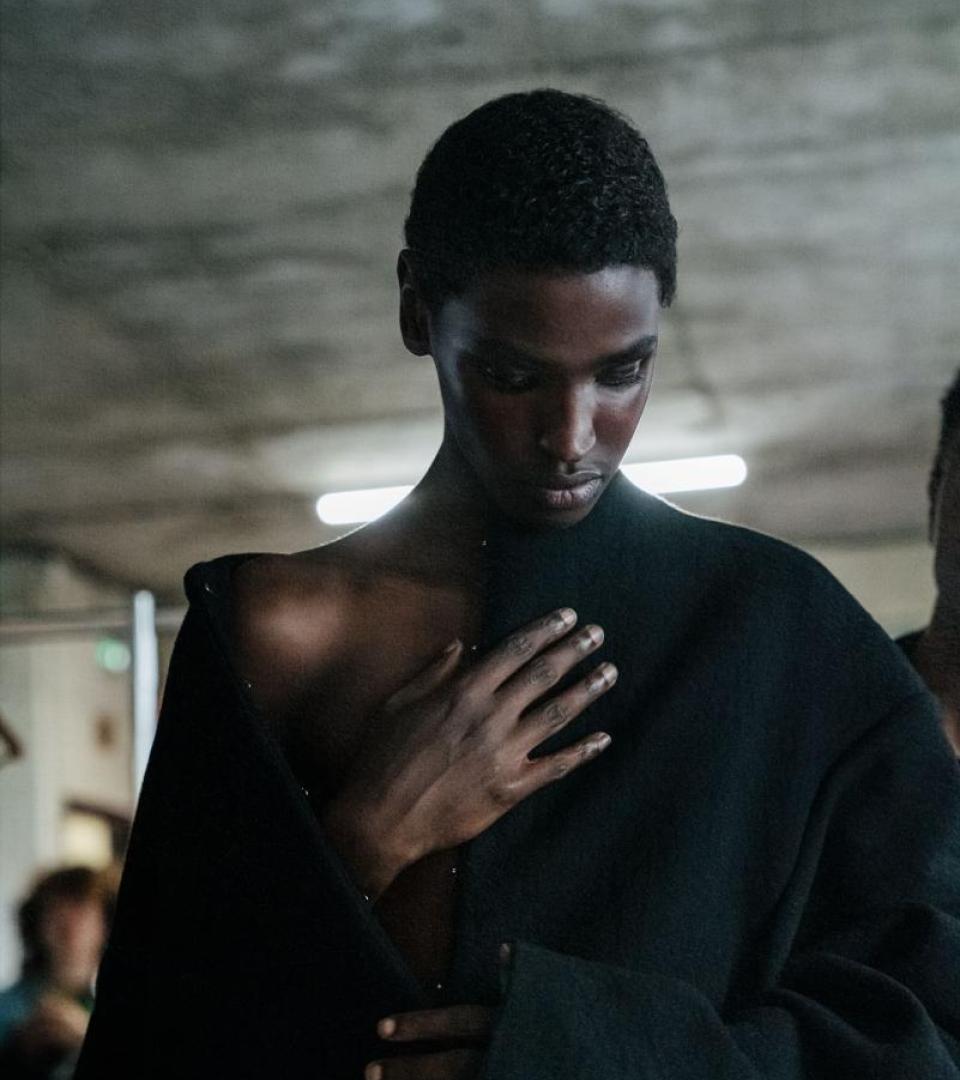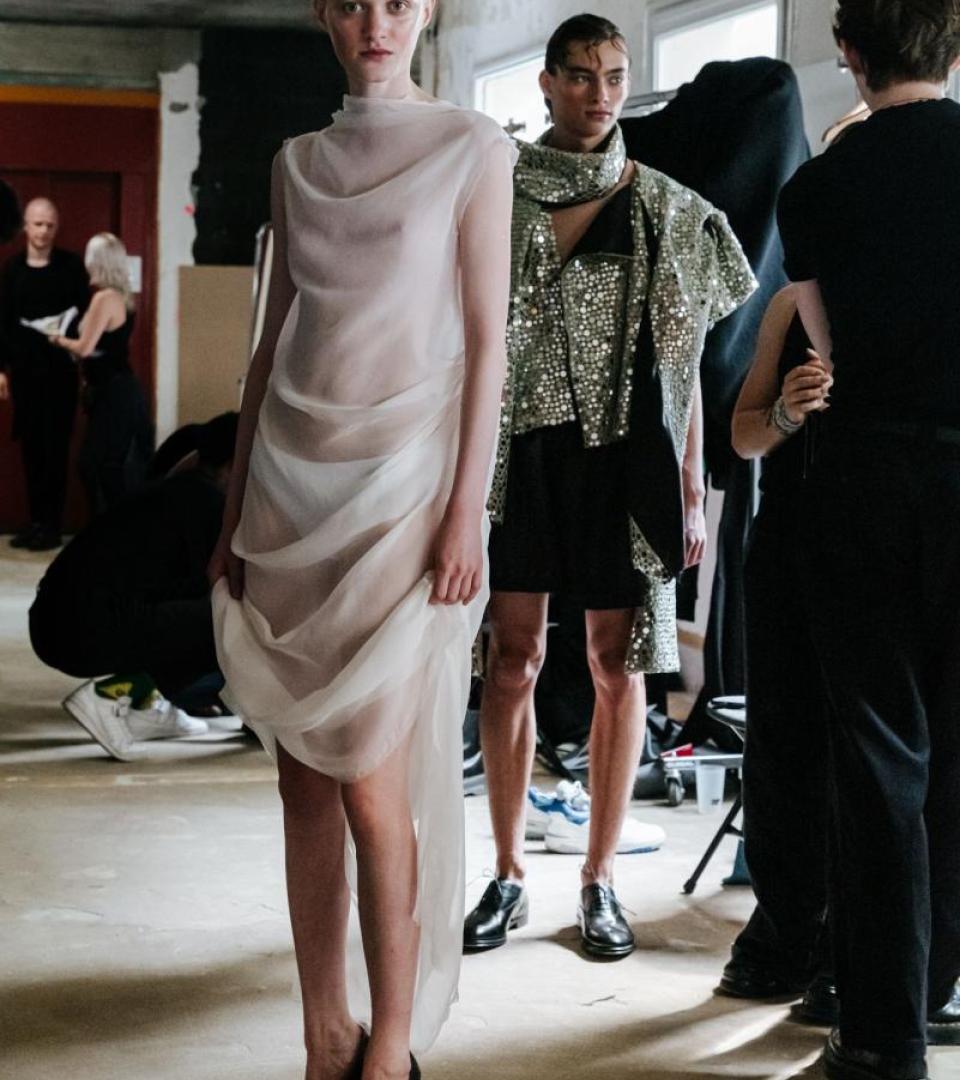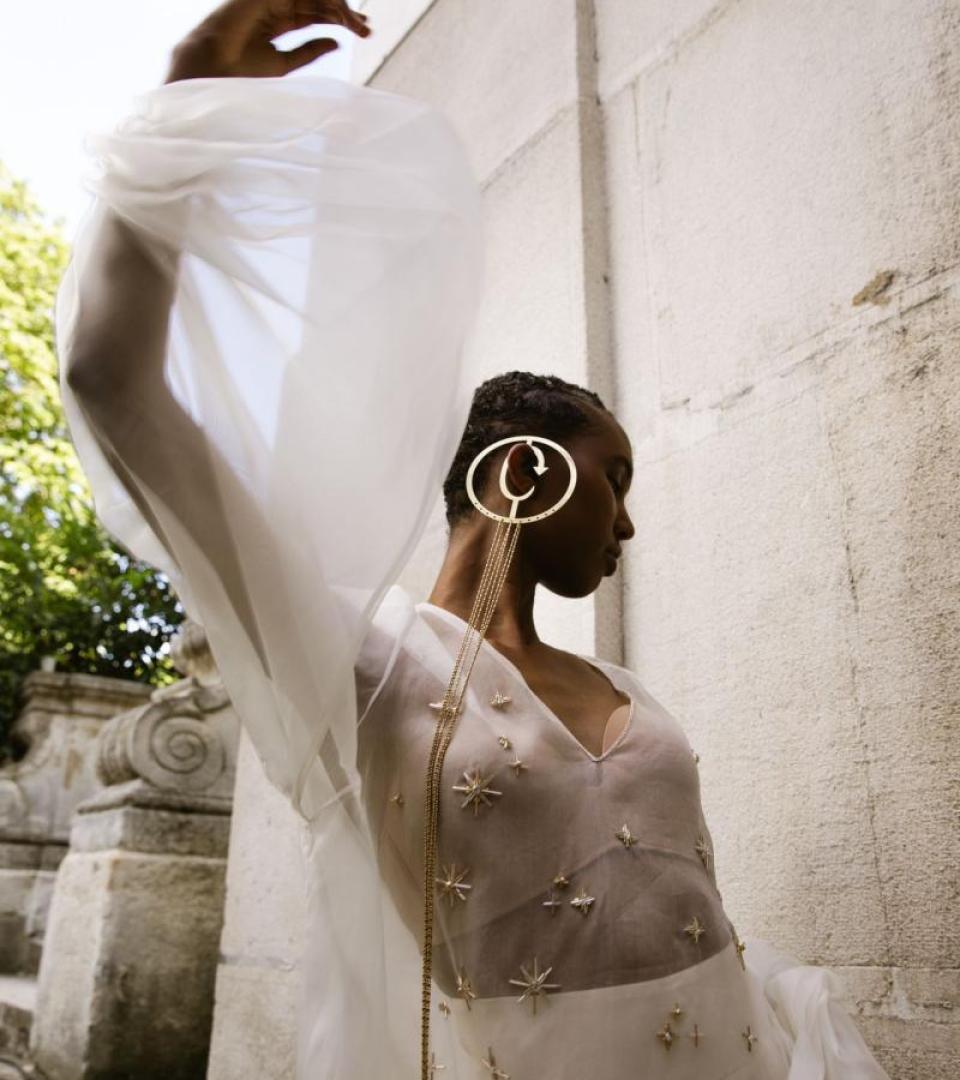The title The Codes suggests a language of its own. Which aspect of Virgil’s practice do you feel becomes most legible through this exhibition?
Chloe Sultan: Virgil used the “codes” to disrupt traditional hierarchies in fashion. He applied architectural thinking to clothing, breaking things down into their constituent parts, then reassembling them in ways that invited new interpretations. He was also interested in the unfinished or in-progress state of things, such as garments that looked like prototypes, exposed seams, visible construction elements, as a reminder that design is a process, not just a finished product.
Working with such a vast archive inevitably raises the question of selection. How did you decide what to highlight in order to preserve the sense of fluidity that defined him?
CS: We’re presenting this body of work in a way that really highlights how Virgil’s ideas evolved. We had more than 20,000 items from The Archive to choose from, but this exhibition expands on the 2022 Virgil Abloh: The Codes, which traced how his design “codes,” originally seen in his Nike collaboration, were foundational to his broader work.
Virgil often described creativity as access, as the act of opening doors. In what ways does the exhibition translate that generosity of spirit into the visitor’s experience?
Athiththan Selvendran: The very existence of this exhibition is a reminder of one of Virgil’s core beliefs: that art should be accessible to everyone. There was an incredible collaborative spirit behind Virgil’s work. Whether it was artists, designers, or athletes, he always built a sense of community into his process, and this brings that to the forefront. That means we’re opening the doors of the Grand Palais to the next generation of creators, designers and makers. We’ve reached out to local universities and academic institutions to invite thousands of local students to visit The Codes, and we’re offering free tickets for any guest 18 years old and below.
Remix was central to Virgil’s method, often summed up in his “3% approach”: taking something familiar and shifting it just enough to say something new. In a world now shaped by AI and accelerated image culture, how does that principle resonate in 2025?
CS: Virgil has always been a collector and physical archivist. From a young age, he always was interested in preserving parts of cultural history that were important to him, his own practice of remembering them. Collecting magazines, mixtapes, vinyls, skateboards, books, shopping and collecting the work of his fashion heroes and the brands he admired. Even at the peak of his career, he was so curiously following what young and emerging creators were doing and collecting their work and spotlighting them in order to support them. Virgil had an undergraduate degree in civil engineering and a master’s degree in architecture, but he didn’t go to fashion school or art school. A lot of the tremendous skills he developed were self-taught through his intense work ethic, curiosity, and deep, obsessive collecting – his way of learning as much as possible about the things he was interested in. His personal archive also shows cross-pollination of research and inspiration across so many disciplines, and historical periods. In The Archive, you can see the physical artifacts of Virgil’s genuine relationships and community of his collaborators and role models.
He was a connector, linking disciplines, communities and generations. How does the exhibition convey that network of relationships rather than a single authorial voice?
CS: Virgil’s numerous collaborations are represented across the exhibition. Visitors will be able to understand his unique vision and talent, as well as the ways that vision interacted with the skills and output of other collaborators. There is no single way to experience this exhibition, and hope each visitor comes away with their own personal experience and understanding.
Virgil blurred distinctions between the commercial and the cultural, and the colette pop-up connected to this exhibition makes that point vividly. How do you see this hybrid space — at once retail, installation and performance — as part of the show’s narrative?
AS: First and foremost, this partnership with colette is a tribute to Virgil’s love of collaboration. His partnership with colette and Sarah Andelman was legendary, and so many of the items available were created through partnerships. He broke down traditional hierarchical barriers in fashion during his career, and we’re continuing that fluidity as we celebrate his legacy in this exhibition.
Any retrospective risks turning into a monument. How did you work to keep the project alive, open-ended and true to his unfinished energy?
AS: Virgil’s mission was to democratise fashion. He was always working to bridge the gap between high fashion and its audiences. His work championed the idea that fashion should be a platform for communication and cultural commentary, and he saw fashion as a means for opening doors, not closing them. Specifically to accompany this first major European exhibition at the Grand Palais, there will be a series of publications and public programs – including dialogues, workshops, performances, and screenings – offering further insight into the exhibition's themes and bringing together voices from Virgil's broader creative community. Additionally, through the Open Source research series, we aim to expand youth access to Virgil Abloh: The Codes at the Grand Palais. There will be a series of special initiatives, developed in collaboration with leading Parisian institutions, to connect students and young audiences to the exhibition through engagement, education, and creative participation.
Opening at the Grand Palais on his birthday is a symbolic gesture. What do you hope visitors carry with them afterwards: a method, a mindset, or a sense of permission to invent?
CS: Both the Virgil Abloh Archive and the Virgil Abloh Foundation exist to continue Virgil’s legacy by spreading his ethos and mission.
AS: We hope this exhibition will inform visitors about what Virgil created – and inspire them to become creators themselves. That would be the best possible tribute to his legacy.
VIRGIL ABLOH: THE CODES EXHIBITION continues at the Grand Palais until October 9th, 2025.
This interview has been lightly edited.



